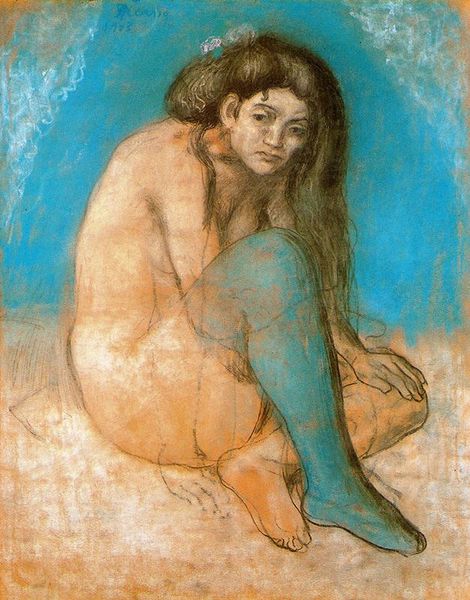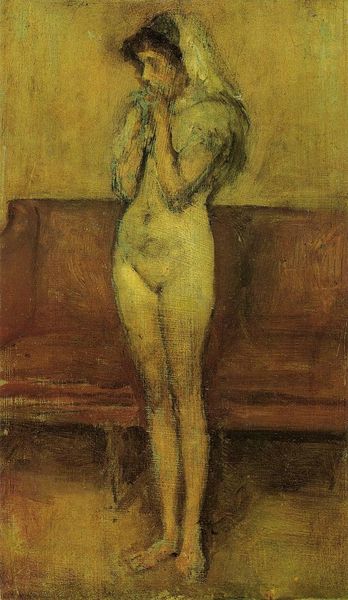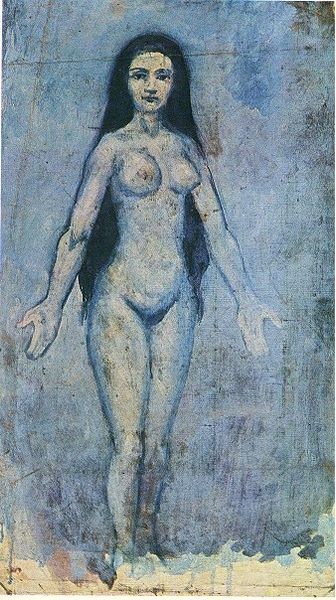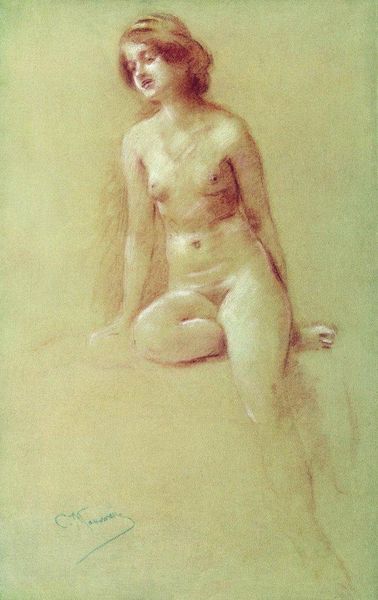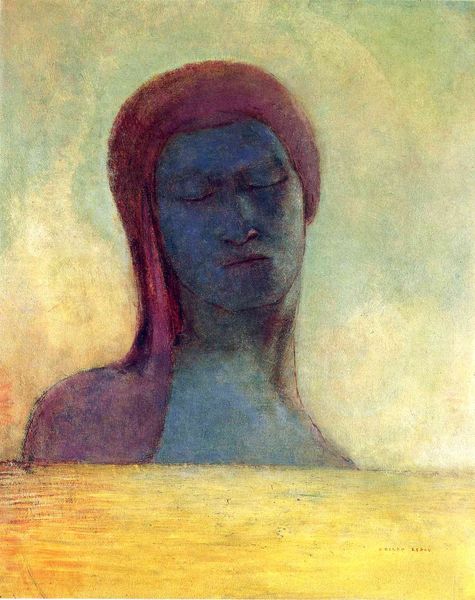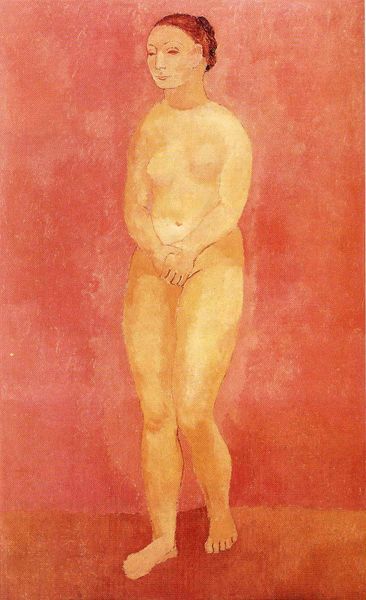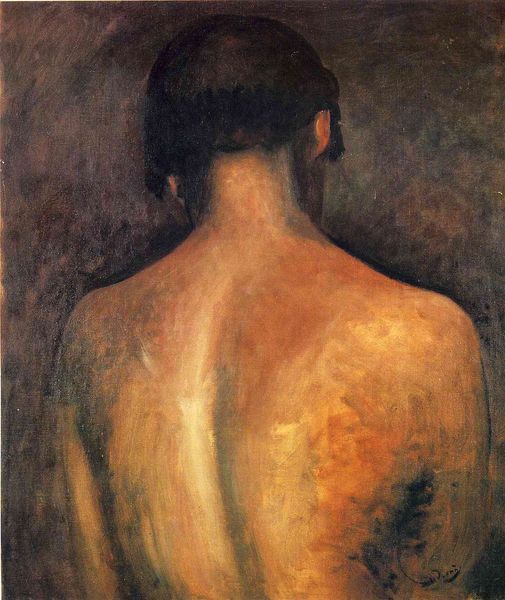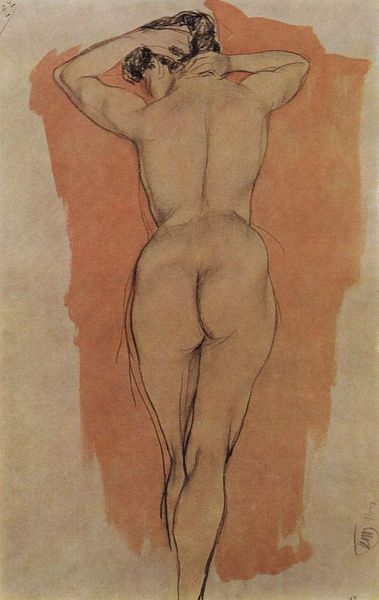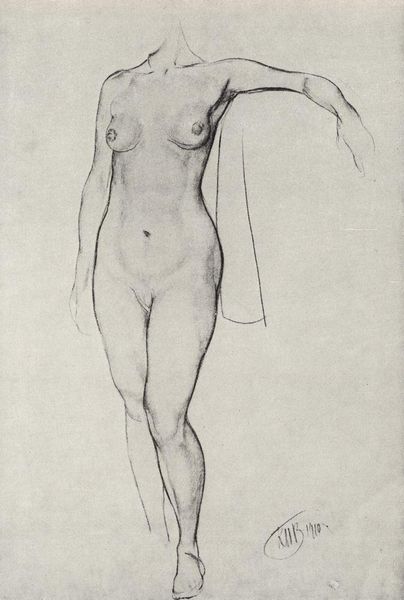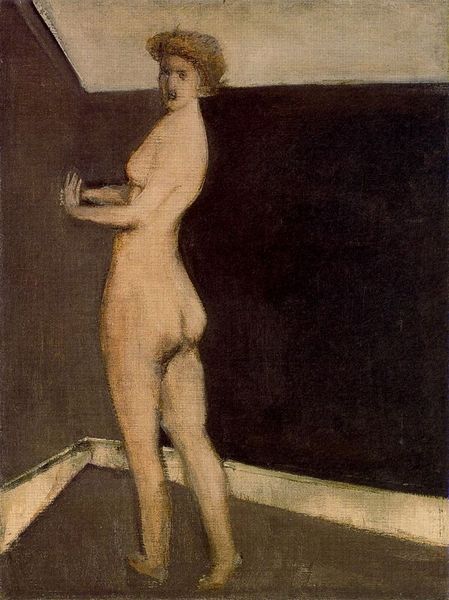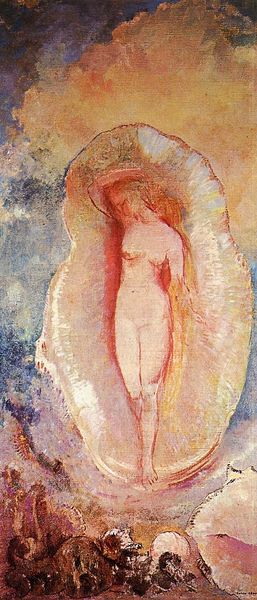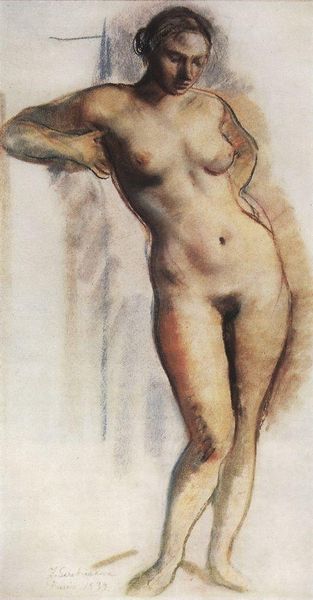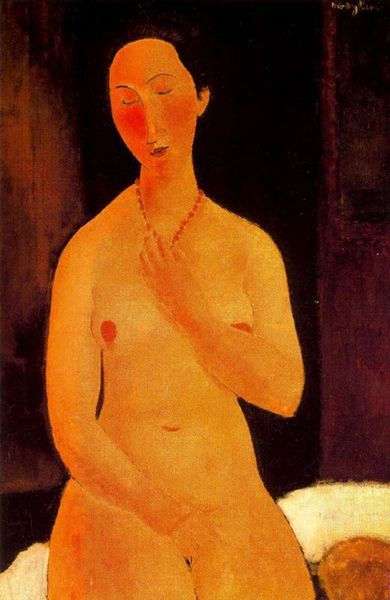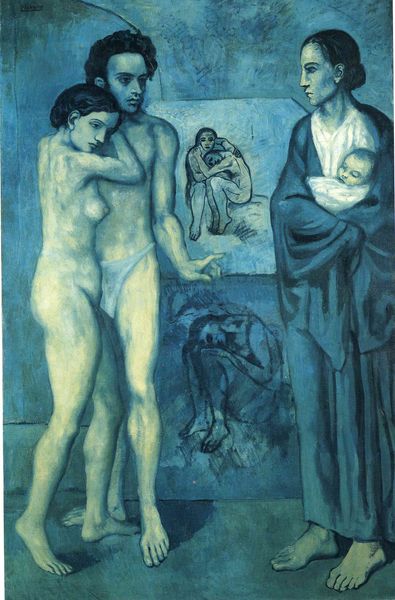
drawing, paper, pencil
#
portrait
#
drawing
#
figuration
#
paper
#
female-nude
#
neo expressionist
#
pencil
#
nude
#
early-renaissance
#
modernism
Copyright: Public domain US
Curator: Here we have Picasso's "Standing young nude" from 1904, rendered in pencil on paper. Editor: It's so incredibly melancholy. The monochromatic blue wash, combined with the figure's forlorn gaze, it just radiates a profound sense of isolation. Curator: The interesting aspect here is the technical approach; you see the layering of pencil strokes? Picasso is really exploring line and form in this early work, focusing less on strict representation and more on the pure elements of visual language. The paper, the graphite – he transforms them into something deeply affecting. Editor: Right, the materials themselves speak. Consider the texture of that paper, almost rough, fighting against the delicate lines he's creating. It highlights a struggle inherent in the creation of beauty from basic means, this young figure emerging from a blue ground, each layer telling its own story of production and labor. Curator: Precisely, and it reflects a wider cultural exploration of the body in early modernism. There's an undeniable influence from earlier Renaissance and academic traditions, particularly in its focus on contrapposto and anatomical rendering, though with Picasso's distinct nascent touch, foreshadowing the later geometric explorations. It invites an interpretation into the cultural aesthetics about women's depiction at the time. Editor: True, but also note the socioeconomic implications. Picasso’s famous Blue Period was steeped in depicting the poverty and marginalization of working-class people. While this nude isn’t explicitly showing labor, there's a certain vulnerability that hints at the economic precarity prevalent in his chosen subjects. It reminds us how reliant he was on materials like paper, readily available to those lacking resources for larger paintings. Curator: I agree that his stylistic language evokes certain feelings, which invite considerations on wider social contexts. However, a closer look reveals the artist experimenting with line and negative space and the early signs of genius. There's an intrinsic dialogue unfolding on this canvas that transcends the surface and transcends its historical circumstances. Editor: I appreciate seeing how these base components converge, offering a poignant representation. The choice of materials underscores this artist's relationship to his time, highlighting his artistic vision and production through lived, material means. Curator: Indeed, considering both its aesthetic composition and the material factors interwoven into its creation definitely enriches our understanding of it. Editor: It’s interesting to view it that way.
Comments
No comments
Be the first to comment and join the conversation on the ultimate creative platform.
